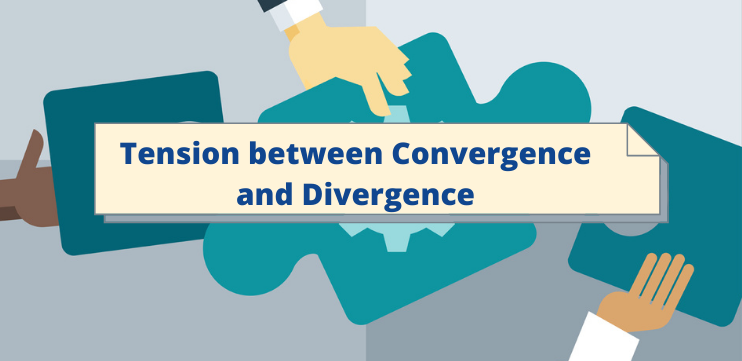Tension between Convergence and Divergence
by dias

is important, but not at the expense of a better solution or better result that can emerge as the work progresses.
A number of years ago I worked with a project focused on providing coordinated services to families of children with disabilities in the far east of Russia. The broad vision was that children with disabilities would live at home with their parents, and families would receive the necessary supports and early interventions to care for their children. The norm at that time was to institutionalize children when they were diagnosed with a disability—virtually any disability.

As partners began to work together, we ran up against how entirely different our own experiences and assumptions were. For example, we learned that:
- Family-centered practice, the cornerstone of early intervention work in the US, was rejected by local professionals, who believed that families did not have the experience or insight to contribute to their children’s care.
- The general belief was that families did not want to take on the burden of raising their children with disabilities at home; however, in reality, families very much wanted to keep their children at home, but lacked the support needed to do so.
- Further complicating the situation was the fact that doctors at the maternity hospital were strongly encouraging families to institutionalize children born with disabilities, thinking they were doing what was best for the families and the children.
This learning led to a significant change in the project vision from simply providing supports to families, to transforming the broader system into one that respected families as the center of care for their children. Goals were expanded to include: changes in practice and policy at the maternity hospital; changes in policy and practices at the clinic to include families as a key source of information as well as a resource in delivering care to their children; and a staffed parent resource center and parent support group. This necessitated expanding the team beyond the early intervention providers to include institutional administrators, and municipal and regional policy-makers and advocates. Families were welcomed to take on a more active role in the project.
This new vision and goals would not have been possible at the onset of the initiative—it all emerged as the partners worked alongside families, and saw data related to families. The willingness to question the world-view shaping the partners’ practice, and to probe that space in between, is an advancement that springs largely from collective impact.
So, how do you incorporate this into your own practice, especially as you begin the hard work of goal setting? Here are some questions to use as a guide:
- Where does the work of partners converge and diverge? Do the goals make room for both aspects?
- Does the set of goals address the role of each partner in moving towards change? Do these goals build on and complement the work of the partners, rather than isolate partners, or undermine their core contribution?
- What is the world view or paradigm that underlies these goals? Is it consistent with the paradigm of those involved? If not, what is needed to align them?
- Has the context, or our understanding of the context, changed since we began the work? What have we learned about implementing our initiative? Do our goals need to change to reflect new learning?
is important, but not at the expense of a better solution or better result that can emerge as the work progresses. A number of years ago I worked with a project focused on providing coordinated services to families of children with disabilities in the far east of Russia. The broad vision was that children with…
